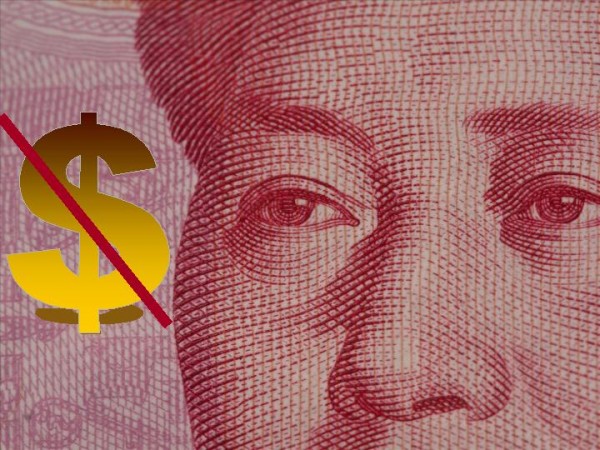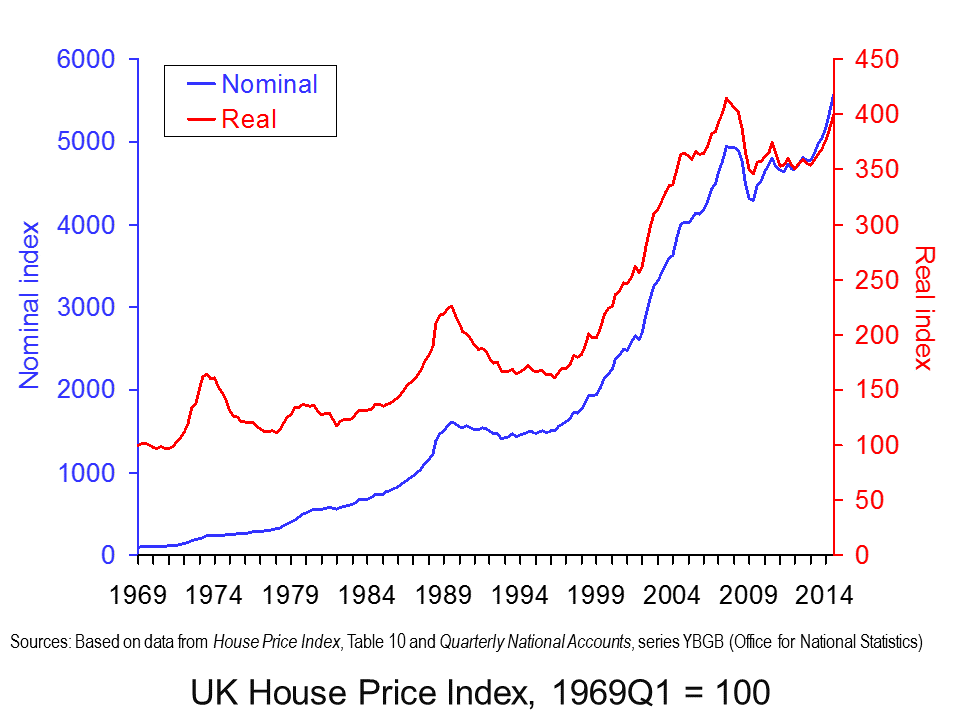 For those of you embarking on a course in economics, one of the first things you’ll come across is the distinction between microeconomics and macroeconomics. The news is full of both microeconomic and macroeconomic issues and you’ll quickly see how relevant both branches of economics are to analysing real-world events, problems and policies.
For those of you embarking on a course in economics, one of the first things you’ll come across is the distinction between microeconomics and macroeconomics. The news is full of both microeconomic and macroeconomic issues and you’ll quickly see how relevant both branches of economics are to analysing real-world events, problems and policies.
As we state in Economics (updated 10th edition), ‘microeconomics is concerned with the individual parts of the economy. It is concerned with the demand and supply of particular goods, services and resources such as cars, butter, clothes, haircuts, plumbers, accountants, blast furnaces, computers and oil.’ In particular, it is concerned with the buying, selling, production and employment decisions of individuals and firms. When you go shopping and make choices of what to buy you are making microeconomic decisions. When firms choose how much of particular products to produce, what techniques of production to use and how many people to employ, these choices are microeconomic ones.
 Microeconomics examines people’s behaviour when they make choices. In fact many of the recent developments in microeconomics involve analysing the behaviour of individuals and firms and the factors that influence this behaviour.
Microeconomics examines people’s behaviour when they make choices. In fact many of the recent developments in microeconomics involve analysing the behaviour of individuals and firms and the factors that influence this behaviour.
Open any newspaper, turn on the TV news or access any news site and you will see various microeconomic issues covered. Why are rents soaring? How is AI affecting various businesses’ productivity? How rapidly is the switch taking place to green energy? How do supermarkets influence spending patterns? Why are wages so low in the social care sector? Why are private PCR tests so expensive for holidaymakers retuning from abroad?
Many of the blogs on this news site will examine microeconomic issues. We hope that they provide useful case studies for your course.
Articles
Questions
- Look through news sites and identify five current microeconomic issues. What makes them ‘micro’ issues?
- If world oil and gas prices rise, why is this a microeconomic issue?
- What do you understand by ‘scarcity’? How is microeconomics related to scarcity?
- Are all goods scarce?
- What is meant by ‘opportunity cost’? Give some examples of how opportunity cost has affected recent decisions you have made.
 The economic climate remains uncertain and, as we enter 2017, we look towards a new President in the USA, challenging negotiations in the EU and continuing troubles for High Street stores. One such example is Next, a High Street retailer that has recently seen a significant fall in share price.
The economic climate remains uncertain and, as we enter 2017, we look towards a new President in the USA, challenging negotiations in the EU and continuing troubles for High Street stores. One such example is Next, a High Street retailer that has recently seen a significant fall in share price.
Prices of clothing and footwear increased in December for the first time in two years, according to the British Retail Consortium, and Next is just one company that will suffer from these pressures. This retail chain is well established, with over 500 stores in the UK and Eire. It has embraced the internet, launching its online shopping in 1999 and it trades with customers in over 70 countries. However, despite all of the positive actions, Next has seen its share price fall by nearly 12% and is forecasting profits in 2017 to be hit, with a lack of growth in earnings reducing consumer spending and thus hitting sales.
The sales trends for Next are reminiscent of many other stores, with in-store sales falling and online sales rising. In the days leading up to Christmas, in-store sales fell by 3.5%, while online sales increased by over 5%. However, this is not the only trend that this latest data suggests. It also indicates that consumer spending on clothing and footwear is falling, with consumers instead spending more money on technology and other forms of entertainment. Kirsty McGregor from Drapers magazine said:
“I think what we’re seeing there is an underlying move away from spending so much money on clothing and footwear. People seem to be spending more money on going out and on technology, things like that.”
Furthermore, with price inflation expected to rise in 2017, and possibly above wage inflation, spending power is likely to be hit and it is spending on those more luxury items that will be cut. With Next’s share price falling, the retail sector overall was also hit, with other companies seeing their share prices fall as well, although some, such as B&M, bucked the trend. However, the problems facing Next are similar to those facing other stores.
But for Next there is more bad news. It appears that the retail chain has simply been underperforming for some time. We have seen other stores facing similar issues, such as BHS and Marks & Spencer. Neil Wilson from ETX Capital said:
“The simple problem is that Next is underperforming the market … UK retail sales have held up in the months following the Brexit vote but Next has suffered. It’s been suffering for a while and needs a turnaround plan … The brand is struggling for relevancy, and risks going the way of Marks & Spencer on the clothing front, appealing to an ever-narrower customer base.”
Brand identity and targeting customers are becoming ever more important in a highly competitive High Street that is facing growing competition from online traders. Next is not the first company to suffer from this and will certainly not be the last as we enter what many see as one of the most economically uncertain years since the financial crisis.
Next’s gloomy 2017 forecast drags down fashion retail shares The Guardian, Sarah Butler and Julia Kollewe (4/1/17)
Next shares plummet after ‘difficult’ Christmas trading The Telegraph, Sam Dean (4/1/17)
Next warns 2017 profits could fall up to 14% as costs grow Sky News, James Sillars (4/1/17)
Next warns on outlook as sales fall BBC News (4/1/17)
Next chills clothing sector with cut to profit forecast Reuters, James Davey (4/1/17)
Next shares drop after warning of difficult winter Financial Times, Mark Vandevelde (22/10/15)
Questions
- With Next’s warning of a difficult winter, its share price fell. Using a diagram, explain why this happened.
- Why have shares in other retail companies also been affected following Next’s report on its profit forecast for 2017?
- Which factors have adversely affected Next’s performance over the past year? Are they the same as the factors that have affected Marks & Spencer?
- Next has seen a fall in profits. What is likely to have caused this?
- How competitive is the UK High Street? What type of market structure would you say that it fits into?
- With rising inflation expected, what will this mean for consumer spending? How might this affect economic growth?
- One of the factors affecting Next is higher import prices. Why have import prices increased and what will this mean for consumer spending and sales?
 The Chinese economy was, for some time, the beacon of the world economy, posting strong growth and giving a much needed boost to demand in other countries. However, the weakening Chinese economy is now causing serious concerns around the world and not least in China itself.
The Chinese economy was, for some time, the beacon of the world economy, posting strong growth and giving a much needed boost to demand in other countries. However, the weakening Chinese economy is now causing serious concerns around the world and not least in China itself.
China’s stock market on Monday 11th January closed down 5.3%, with the Hong Kong Index down by 2.8%. These falls suggest a continuing downward trajectory this week, following the 10% decline on Chinese markets last week. Today, further falls were caused, at least in part, by uncertainty over the direction of the Chinese currency, the yuan. Volatility in the currency is expected to continue with ongoing depreciation pressures and adding to this is continuing concerns about deflation.
The barrage of bad news on key economic indicators may well mean significant intervention by Chinese authorities to try to avoid its slowest growth in 25 years. However, there are also concerns about China’s ability to manage its economic policy, given recent events. IG’s Angus Nicholson said:
“Global markets are still in the grips of China fears, and it is uncertain whether the Chinese government can do enough to reassure global investors.”
Similar sentiments were echoed by Paul Mackel, head of emerging markets FX research at HSBC:
“Different signals about foreign exchange policy have wrong-footed market participants and we are wary in believing that an immediate calmness will soon emerge.”
Perhaps key to turning this downward trend on its head, will be the Chinese consumers. With a traditionally larger saving ratio than  many Western economies, it may be that this ‘cushion’ will give growth a boost, through the contribution of consumer spending. As we know, aggregate demand comprises consumption, investment, government spending and net exports (AD = C + I + G + X – M). Consumer spending (C) increased from 50.2% in 2014 to 58.4% in 2015, according to HIS Global Insight. A similar increase for 2016 would certainly be welcome.
many Western economies, it may be that this ‘cushion’ will give growth a boost, through the contribution of consumer spending. As we know, aggregate demand comprises consumption, investment, government spending and net exports (AD = C + I + G + X – M). Consumer spending (C) increased from 50.2% in 2014 to 58.4% in 2015, according to HIS Global Insight. A similar increase for 2016 would certainly be welcome.
As oil prices continue to fall and concerns remain over China’s weak economic data, we may well soon begin to see just how interdependent the world has become. Many economists suggest that we are now closer to the start of the next recession than we are to the end of the last one and this latest turmoil on Chinese stock markets may do little to allay the fears that the world economy may once again be heading for a crash. The following articles consider the Chinese turmoil.
Free lunch: China’s weakest link Financial Times, Martin Sandbu (11/01/16)
China’s stocks start the week with sharp losses BBC News (11/01/16)
China shares fall 5% to hit-three-month low The Guardian (11/01/16)
China’s resilient shoppers face fresh test from market headwinds Bloomberg (11/01/16)
China shares head lower again on price data Sky News (11/01/16)
U.S., European shares slip as China, oil woes continue Reuters, Lewis Krauskopf (11/01/16)
U.S. stocks drop as oil tumbles again Wall Street Journal (11/01/16)
China escalates emergency stock market intervention The Telegraph, Mehreen Kahn (05/01/16)
Questions
- How are prices and values determined on the stock market?
- Share prices in China have been falling significantly since the start of 2016. Has it been caused by demand or supply-side factors? Use a demand and supply diagram to illustrate this.
- Why has the volatility of the Chinese currency added further downward pressure to Chinese stock markets?
- With the expected increase in consumer spending in China, how will this affect AD? Use a diagram to explain your answer and using this, outline what we might expect to happen to economic growth and unemployment in China.
- Why are there serious concerns about the weak level of inflation in China? Surely low prices are good for exports.
- Should the world economy be concerned if China’s economy does continue to slow?
- To what extent are oil prices an important factor in determining the future trajectory of the world economy?
 The rate of inflation in the UK is measured using the Consumer Prices Index (CPI). This is made up of a basket of goods and the ONS updates this ‘basket’ each year to ensure it is representative of what the average UK household buys. The basket contains 703 items, with 110,000 individual prices collected each month.
The rate of inflation in the UK is measured using the Consumer Prices Index (CPI). This is made up of a basket of goods and the ONS updates this ‘basket’ each year to ensure it is representative of what the average UK household buys. The basket contains 703 items, with 110,000 individual prices collected each month.
In past years, items such as lip gloss have been added to the basket of goods, together with tablet computers and teenage fiction. In the recent update by the ONS, e-cigarettes have been added, together with specialist ‘craft’ beers and music streaming. On the other hand, other items have been removed, as the world changes. For example, during the recession, champagne was removed as an item that the representative household was no longer buying. In other cases, items are removed as they become outdated or obsolete with technology changing. This is the case with satellite navigation systems. As people turn to using their smartphones to navigate their way from A to B, satellite navigation systems are no longer seen as an item bought by the representative household.
The UK inflation rate is at an all-time low of 0.3% and there have been concerns that it may become negative, meaning we enter the world of deflation. However, if this does occur, many suggest that it is not bad deflation, as it is being driven by the extremely low oil prices. No matter what the inflation rate, the ONS will always continue to update the basket of goods that calculates inflation. It is therefore essential that these changes are made each year, as consumer buying habits do fluctuate considerably, as income changes, technology changes and general tastes change. The following articles consider what’s in and what’s out.
From craft beer to e-cigarettes, inflation basket reflects Britain’s changing shopping habits The Guardian, Katie Allen (17/3/15)
Inflation-measuring basket of goods adds protein powder, e-cigarettes The Grocer, Andrew Don (17/3/15)
E-cigareets and craft beers in updated inflation basket BBC News (17/3/15)
E-cigs added to inflation basket Mail Online (17/3/15)
Craft beer, e-cigarettes and protein shakes dded to price basket used to calculate inflation Independent, Hazel Sheffield (17/3/15)
U.K. hipsters and gym junkies win approval in new price basket Bloomberg, Tom Beardsworth (17/3/15)
Spotify in and sat navs out: take a look at the new inflation basket The Telegraph, Szu Ping Chan (17/3/15)
E-cigarettes, craft beer and Spotify enter UK inflation basket Reuters, Toby Melville (17/3/15)
Craft beer and e-cigarettes added to CPI basket Financial Times (17/3/15)
Questions
- What is the difference between the CPI and RPI? Which is usually higher? Explain your answer.
- Explain why champagne was removed from the basket of goods during the recession. What is sensible?
- How is the CPI calculated and hence how is inflation measured?
- Why has there been a movement towards chilled pizzas and away from frozen pizzas? Is the change likely to affect their relative price? Use a diagram to support your answer.
- What impact has technological progress had on the basket of goods that the representative household purchases? Do you think that technological progress make it more or less important for the basket of goods to be reviewed annually?
- Do you think products such as the iPad and e-cigarettes should be included in the CPI? Are they truly representative?
- In the BBC News article, you can access a list of the products that are ‘in and out’. Is there anything on there that you think should be in or that should be out? Be sure to justify your answer!
 House prices are always a good signal for the strength or direction of the economy. While there will always be certain areas that are more sought after than others and such differences will be reflected in relative house prices, the regional divide that we currently see in the UK is quite astonishing.
House prices are always a good signal for the strength or direction of the economy. While there will always be certain areas that are more sought after than others and such differences will be reflected in relative house prices, the regional divide that we currently see in the UK is quite astonishing.
Prior to the financial crisis, house prices had been rising across the county, but in the year following the financial crisis, they declined by 19 per cent. It was only in 2013, when prices began to increase and, perhaps more importantly, when the variation in regional house prices began to increase significantly. In mid-2014, the UK’s annual house price inflation rate was 11.7 per cent, but the rates in London and the South East were 19.1 and 12.2 per cent, respectively. Elsewhere in the UK, the average rate was 7.9 per cent.
These regional differences have continued and figures show that the current differential between the cheapest and most expensive regional average house price is now over £350,000. In particular, data from the Land Registry shows that the average house price in London is £458,283, while in the North East, it is only £97,974.
Those people who own a house in London have benefited from such high house prices, in many cases finding that their equity in their house has grown significantly. Furthermore, any home-owners selling their house in London and moving elsewhere are benefiting from lower house prices outside London.
However, most first-time buyers looking for a house in London are being competed out of the market, finding themselves unable to gain a mortgage and deposit for the amount that they require. The opposite is, of course, happening in other parts of the country. First-time buyers are more able to enter the property market, but home-owners are finding that they have much less equity in their house.
This has also caused other problems, in particular in the labour market. Workers who are moving to jobs in London are finding the house price differentials problematic. Although wage rates are often higher in London than in other parts of the country, the house price differential is significantly bigger. This means that if someone is offered a job in London, they may find it impossible to find a house of similar size in London compared to where they had been. After all, an average family home in the North East can be purchased for under £100,000, whereas an average family home in London will cost almost £500,000.
The housing market is problematic because of particular characteristics.
Supply tends to be relatively fixed, as it can take a long time to build new houses and hence to boost supply. Furthermore, the UK has a relatively dense population, with limited available land, and so planning restrictions have to be kept quite tight, which is another reason why supply can be difficult to increase.
On the demand-side, we are seeing a change in demographics, with more single-person households; people living longer; second home purchases and many other factors.  These things tend to push up demand and, with restricted supply, house prices rise. Furthermore, with certain areas being particularly sought after, perhaps due to greater job availability, ease of commuting, schools, etc., house price differentials can be significant.
These things tend to push up demand and, with restricted supply, house prices rise. Furthermore, with certain areas being particularly sought after, perhaps due to greater job availability, ease of commuting, schools, etc., house price differentials can be significant.
The Conservatives, together with the other main parties, have promised to build more houses to help ease the problem, but this really is a long-run solution.
The Bank of England will undoubtedly have a role to play in the future of the housing market. The affordability of mortgages is very dependent on interest rate changes by the Bank’s Monetary Policy Committee.
Although house prices in London have recently fallen a little, the housing cost gap between living in London and other areas is unlikely to close by much as long as people continue to want to live in the capital. The following articles consider the housing market and its regional variations.
Articles
London’s homeowners have made £144,000 on average since 2009 International Business Times, Sean Martin (20/2/15)
Wide gap in regional house prices, Land Registry figures show BBC News, Kevin Peachey (27/2/15)
Mapped: 10 years of Britain’s house price boom (and bust) The Telegraph, Anna White (27/2/15)
Oxford houses less affordable than London Financial Times, Kate Allen (26/2/15)
January’s UK house prices show unexpected climb The Guardian (5/2/15)
House prices since 2008: best and worst regions The Telegraph, Tom Brooks-Pollock (22/8/14)
House prices hit new record high of £274k with six regions now past pre-crisis peak – but the North lags behind This is Money, Lee Boyce (14/10/14)
Data
House price indices: Data Tables ONS
Links to sites with data on UK house prices Economic Data freely available online, The Economics Network
Regional House Prices Q4 2014 Lloyds Banking Group
Questions
- What are the main factors that determine the demand for housing? In each case, explain what change would shift the demand curve for housing to the right or the left.
- Which factors determine supply? Which way will they shift the supply curve?
- Put the demand and supply for housing together and use that to explain the recent trends we have seen in house prices.
- Use your answers to question 1 – 3 to explain why house prices in London are so much higher than those in the North East of England.
- Why are interest rates such an important factor in the housing market?
- Explain the link between house prices and the labour market.
- Do you think government policy should focus on reducing regional variations in house prices? What types of policies could be used?
 For those of you embarking on a course in economics, one of the first things you’ll come across is the distinction between microeconomics and macroeconomics. The news is full of both microeconomic and macroeconomic issues and you’ll quickly see how relevant both branches of economics are to analysing real-world events, problems and policies.
For those of you embarking on a course in economics, one of the first things you’ll come across is the distinction between microeconomics and macroeconomics. The news is full of both microeconomic and macroeconomic issues and you’ll quickly see how relevant both branches of economics are to analysing real-world events, problems and policies. Microeconomics examines people’s behaviour when they make choices. In fact many of the recent developments in microeconomics involve analysing the behaviour of individuals and firms and the factors that influence this behaviour.
Microeconomics examines people’s behaviour when they make choices. In fact many of the recent developments in microeconomics involve analysing the behaviour of individuals and firms and the factors that influence this behaviour.




